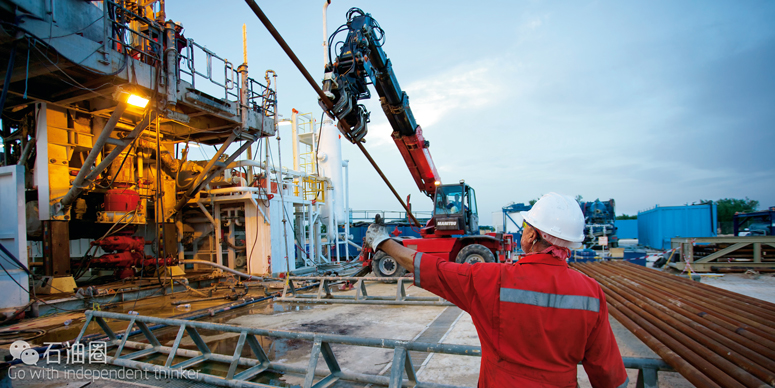
“页岩气革命”以来,美国的天然气储量迅速增长。EIA预测,美国将在明年下半年完成从天然气净进口国向净出口国的转换。虽然美国目前已经基本实现了天然气的自给自足,但距离美国成为天然气净出口国,还有一段很长的路要走。这是为什么呢?
据报道,“页岩气革命”使美国的能源进出口结构得到了不小的改变,2000年左右,美国30%以上的天然气依赖进口,之后的每年进口比例都在增加,一直持续到2007年左右。然后呈现逐年下降趋势,2013年已经几乎没有进口。2014年,美国天然气已经实现了全年本土产量超过全年本土消耗,其中40%以上是页岩气,并且已经开始出口。但是最近两年形势告诉我们,美国要想在天然气独立的基础上实现向净出口国的转换,还需要考虑以下几个方面的原因:
1. 美国天然气需求量上升而产量或将下降
由于美国“清洁能源计划”的施行以及更加严苛的环境保护措施的引入,在能源方面,煤炭的使用在减少,天然气的利用率则在增加。当前,电力部门对天然气的需求在美国所占的比重为30%,未来有计划使用更多的燃气设备来替代燃煤设备。
然而,美国的这种计划在短时间内或将难以实现。由于近两年油价下跌,那些投资页岩气的公司都将重心放在了偿还债务而非投资上。所以,目前他们预测天然气产量在未来一年或将下降。美国能源信息署预计,9月天然气产量将连续第七个月下滑,达454立方英尺/日,为2015年5月以来的最低水平。
2.开发商积极性受挫
自从2014年2月,天然气价格触及高点后,便迈入了熊市。一方面,油价的持续低迷带动气价下跌,另一方面天然气市场供应过剩进一步降低了气价,低气价可能严重影响开发商积极性。而且,页岩气投入产出比太低,回报在短期内无法弥补前期的巨大投入,可能导致开发商撤资、停止开发等。而当前美国大量页岩气资源正处于待开发状态,因此,对LNG项目的投资如果继续无利可图,美国的天然气出口将受到不利影响。
3.各国对天然气的需求降低
不可否认,当前的美国天然气存储量在全球总量中占很大的比重。然而各进口国天然气需求量有走低趋势,这对于美国天然气的出口也造成了一定的影响。
首先,由于当前全球LNG低价现状以及投放亚洲市场的高昂运输费,美国LNG大部分只投放在了北美和欧洲市场。在亚洲市场这边,2015年8月27日,日本九州电力公司恢复了位于该国鹿儿岛县的川内核电站1号机组,预计未来几个月内将反应堆输出功率大幅提高。其他核电机组也将陆续重启。分析师预计,到2017年,日本能够恢复11.5千兆瓦的核电生产能力,而这将使天然气需求减少约1100万吨,即日本天然气进口总量的12%。
而中国正在努力让自己能源独立,不再希望大量依赖进口能源。即便经济增长使得未来几年内中国仍需进口天然气来满足大量的能源消费,但进口能源将不会占据能源供给的主导地位。此前,国际能源署(IEA)也预测,2020年,中国一半的天然气需求将由国内生产满足,若是积极开发其庞大的页岩气储备,可能国内生产将会满足更多的需求。另外,IEA还预测,虽然在2015-2020年期间,中国天然气总消费量预计将增加70%以上,而LNG进口占天然气来源比例将仅增加6%。
此外,伴随风能、太阳能等新能源生产能力提高、生产成本下降以及国家财政补贴支持,欧洲的天然气产业正在逐步被取代。
亚洲、欧洲的需求减少,而澳大利亚、卡塔尔等供应国还在积极进行市场份额的争夺,这意味着在未来五年内,全球天然气供应过剩的情况将会加剧。
4.气候影响
在供需关系上,气候变化也扮演着重要角色。在不减产的情况下,若经历暖冬或是酷暑,库存的天然气会很快被用完。另外,厄尔尼诺和拉尼娜现象的转换也对市场未来起着重要作用。2015-2016年的厄尔尼诺在2016年5月宣告结束,此次厄尔尼诺是近百年来最强的厄尔尼诺之一,厄尔尼诺现象使全球气温屡创新高,多地经历了暖冬,影响了油气价格。花旗集团能源分析师表示,厄尔尼诺现象引发的气候变化对油价和气价产生了负面影响。受厄尔尼诺事件影响,美国冬季平均气温偏高,让美国取暖用油、馏分油和柴油的需求受到影响,对天然气的需求也下降许多。拉尼娜又称“反厄尔尼诺”,产生的影响与厄尔尼诺相反,如果这种现象发生了,那美国将要面临寒冬考验,在天然气库存和价格上也会有更大的压力。
综上所述,美国国内国外的各项因素都会影响到其天然气的出口进程,美国要想在天然气独立的基础上实现向净出口国的转换并非易事。
作者/Dougie Youngson 编辑/李倩 尉晶
Despite a particularly mild winter, the US power market used 2.2tcf of gas between December and February, an increase of over 10% on the previous year. So what’s driving the growth in gas demand?
Due to the implementation of the ‘Clean Power Plan’ and the introduction of stricter environmental controls, the power sector is reducing its exposure to coal and becoming more reliant on gas. As a result, the electricity sector now accounts for c30% of gas demand in the US, and this is set to increase further as more coal-fired generation is replaced by cleaner gas-fired capacity.
However the US is going to struggle to meet this demand. Due to the decline in the oil price over the past two years, investment in US shale has been slashed as companies have focused on debt repayment rather than capex. As a result, gas production is now forecast to go into decline later this year.
Weather is playing an important part in the demand outlook. A mild winter and a hot summer have resulted in rapidly depleting inventory against a backdrop of stagnating, if not declining production.
Furthermore, the expected conversion of El Niño into La Niña could play a key part in the market’s future. If this change is to happen, the US is likely to experience a harsh, cold winter this year which will put more pressure on inventories and therefore prices.
This will also have an impact on the LNG sector. Since 2010, we have seen a global gas glut brought about by excessive construction of new LNG facilities. For LNG to work, projects need large supplies of cheap gas. Yes, we have seen initial shipments of US LNG targeting the European gas market, but it is unlikely that the US will become a major exporter.
Given low global LNG prices and the fact that US LNG can only target the South American and European markets due to high transportation costs to Asia markets, the construction of new production facilities has not been warranted and projects have been shelved as result. If gas prices are increasing and LNG margins are compressed further, then investment in new projects will become even less economic.
Until there is more visibility and greater clarity on how global gas prices are going to play out, then we can expect to see further projects being shelved (particularly in the US), ahead of final investment decisions being made and further capex being committed.
In addition, the industry’s ability to lower capex and actually deliver projects on budget is paramount. The industry could ‘live’ with cost overruns in the old, higher price environment, but this is clearly no longer the case and is putting off investment in the LNG sector.
In terms of the winners in this scenario, gas producers stand to benefit from the rising gas price as it will improve their flow situation. But for the downstream users, it is bad news. As they’re being forced by environmental regulations to increase gas usage in an increasing gas price environment, the power producers will see their margins impacted unless rising costs can be passed onto customers.
未经允许,不得转载本站任何文章:
-

- Linda
-
石油圈认证作者
- 毕业于南开大学传播学专业,以国际权威网站发布的新闻作为原始材料,长期聚焦国内外油气行业最新最有价值的行业动态,让您紧跟油气行业商业发展的步伐!


 石油圈
石油圈
